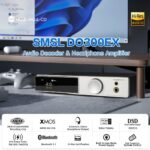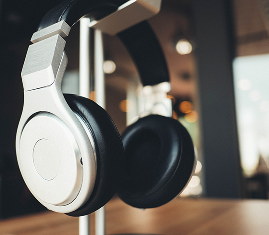Okay, so you’re all about that high-quality sound experience when it comes to your audio system, right? Well, brace yourself because we’re about to uncover a game-changer that could take your audio setup to a whole new level. We’re talking about the impact of power conditioning on your audio system’s performance. Now, you may be wondering what power conditioning even means, but fear not, because we’re here to unravel the mystery and show you how it can revolutionize the way you listen to your favorite tunes. Get ready to be blown away by the difference a well-conditioned power supply can make in delivering pristine, crystal-clear sound like you’ve never heard before.
Understanding Power Conditioning
Definition of power conditioning
Power conditioning refers to the process of improving the quality of electrical power supplied to audio systems. It involves the use of specialized devices, known as power conditioners, to ensure a stable and clean power supply to audio components. The main objective of power conditioning is to eliminate or minimize the various forms of electrical noise and interference that can negatively affect the performance and sound quality of audio systems.
The principle of power conditioning
The principle behind power conditioning lies in the recognition that the quality of the electrical power supplied to audio systems can significantly impact their performance. Power conditioners are designed to filter out any unwanted electrical noise, fluctuations, or voltage irregularities, ensuring that only clean and stable power reaches the audio components. By doing so, power conditioners help maintain optimal operating conditions for the audio equipment and minimize the potential for audio signal degradation.
Different types of power conditioners
There are several types of power conditioners available in the market, each with its own set of features and functionalities. One common type is the power strip-style power conditioner, which provides multiple outlets with surge protection and basic filtering capabilities. Another type is the rack-mount power conditioner, which is typically used in professional audio setups and offers advanced power filtration and surge protection capabilities. Additionally, there are also standalone power conditioners that can be placed directly between the power outlet and the audio component, providing targeted filtration and voltage regulation.
The Role of Power Supply in Audio Systems
Importance of stable power supply
A stable power supply is crucial for the optimal functioning of audio systems. Audio components, such as amplifiers, preamplifiers, and digital-to-analog converters, require a consistent and steady supply of power to deliver accurate and high-quality audio reproduction. Any fluctuations or inconsistencies in the power supply can adversely affect the performance and sound reproduction of these components.
Effects of unstable power supply on audio system
When an audio system is subjected to unstable power, several negative effects can occur. These include increased noise floor, decreased dynamic range, distorted sound reproduction, and compromised clarity. Unstable power can introduce unwanted electrical noise and interference into the audio signal, leading to a loss of detail and accuracy in the sound reproduction. Furthermore, voltage fluctuations and surges can potentially damage sensitive audio components, resulting in costly repairs or replacements.
How power supply influences audio quality
The quality of the power supply directly affects the audio quality produced by an audio system. A clean and stable power supply allows audio components to operate at their optimum performance levels, ensuring accurate signal reproduction and faithful sound reproduction. On the other hand, a poor power supply can introduce noise, interference, and voltage inconsistencies that degrade the audio signal, resulting in compromised sound quality.
Functionality of Power Conditioner in Audio System
Power filtration process
One of the primary functions of a power conditioner is to filter out electrical noise and interference from the incoming power supply. Power conditioners utilize various filtering technologies and components, such as capacitors, inductors, and transformers, to attenuate and eliminate unwanted noise. By removing noise from the power supply, power conditioners help maintain a clean and distortion-free audio signal, resulting in improved sound quality.
Protection against power surges
Power surges, which are sudden increases in voltage, can pose a significant risk to audio components. Power conditioners often incorporate surge protection mechanisms, such as surge suppression circuits and voltage clamping devices, to safeguard audio equipment from the damaging effects of power surges. These protective features help prevent equipment damage and ensure the longevity of audio components.
Voltage regulation
Another important feature of power conditioners is voltage regulation. Fluctuations in voltage levels, whether they be overvoltage or undervoltage, can negatively impact audio system performance. Power conditioners with voltage regulation capabilities actively monitor the incoming voltage and automatically adjust it to maintain a stable and optimal level for the connected audio components. This helps prevent voltage-related issues and ensures consistent audio performance.
Impact of Power Conditioning on Sound Quality
Effects on signal clarity
Power conditioning plays a crucial role in improving the clarity of the audio signal. By eliminating electrical noise and interference from the power supply, power conditioners enhance the signal-to-noise ratio, allowing for greater clarity and definition in the sound reproduction. The removal of background noise and unwanted artifacts results in a cleaner and more immersive audio experience.
Influence on audio dynamic range
The dynamic range is the difference between the loudest and softest sounds that an audio system can accurately reproduce. Poor power quality can limit the dynamic range, causing loss of detail and compression of audio dynamics. Power conditioners help maintain a stable power supply, allowing audio components to operate within their intended dynamic range. This preserves the full spectrum of audio dynamics and ensures a more dynamic and captivating listening experience.
Impact on soundstage and imaging performance
The soundstage refers to the perceived spatial location and dimensionality of sound within an audio system. Power conditioning can have a significant impact on the soundstage and imaging performance. By providing a clean and stable power supply, power conditioners minimize the potential for audio artifacts and distortions that can affect the spatial accuracy and imaging capabilities of the audio system. The result is a more precise and realistic soundstage, with improved instrument and vocal placement.
Physiological Effects of Poor Power Conditioning
Auditory stress
Listening to audio systems powered by poor quality power can induce auditory stress. The presence of electrical noise, fluctuations, and inconsistencies in the power supply can create a fatiguing listening experience for the listener. The brain’s auditory system works harder to process and interpret the distorted audio signal, leading to increased mental strain and potential discomfort.
Listener fatigue
Poor power conditioning can contribute to listener fatigue, especially during prolonged listening sessions. The presence of unwanted noise and interference in the audio signal can require increased cognitive effort to decipher the desired sound from the distorted background. This sustained mental effort can lead to a decrease in listener engagement and a feeling of fatigue, ultimately detracting from the enjoyment of the audio experience.
Perception of audio distortions
Poor power quality can introduce various audio distortions, such as harmonic distortion, intermodulation distortion, and phase distortion. These distortions alter the original audio signal, resulting in perceived audio inaccuracies. Listeners may notice a loss of clarity, muddiness in the sound reproduction, and a general lack of fidelity. These auditory distortions can diminish the overall audio experience and prevent the listener from fully appreciating the intended nuances of the music or audio content.
Technical Effects of Poor Power Conditioning
Impact on audio component lifespan
Audio components are sensitive to the quality of the power supply they receive. Poor power conditioning can subject these components to voltage irregularities and electrical noise, potentially leading to premature wear and tear. Unstable power can strain internal circuitry, degrade electronic components, and increase the likelihood of component failure. Power conditioning helps mitigate these risks by providing a stable and clean power supply, thus prolonging the lifespan of audio equipment.
Effects on device performance
Inadequate power conditioning can result in compromised device performance. Audio components may struggle to accurately reproduce the desired sound due to the presence of noise and interference in the power supply. This can manifest as poor transient response, reduced instrument separation, and diminished overall audio fidelity. By implementing effective power conditioning, these performance limitations can be minimized, allowing audio components to operate optimally and deliver their intended sonic capabilities.
Higher risk of equipment damage
Power quality issues, such as power surges or voltage fluctuations, pose a significant risk to audio equipment. Without adequate power conditioning, these voltage irregularities can damage sensitive electronic components, render devices inoperable, and require costly repairs or replacements. Power conditioners with surge protection capabilities help shield audio equipment from these potential threats, providing an added layer of protection and minimizing the risk of equipment damage.
Ensuring Optimal Power Conditioning
Choosing the right power conditioner
Selecting an appropriate power conditioner for an audio system requires careful consideration of the specific system requirements. Factors to consider include the power demands of the audio components, the level of power conditioning required, and the available budget. Power conditioners come in a range of sizes, capacities, and functionalities, allowing users to choose the one that best suits their needs.
Methods of power conditioning
In addition to dedicated power conditioners, there are other methods available to improve power quality in audio systems. These include the use of dedicated electrical circuits for audio equipment, utilizing power line filters, and employing isolation transformers. These alternative methods can help mitigate common power quality issues and improve the overall stability and cleanliness of the power supply.
Optimized placement of power conditioner in the audio system setup
The placement of the power conditioner within the audio system setup also plays a role in optimizing power conditioning. It is recommended to position the power conditioner as close to the audio components as possible, minimizing the length of power cables and reducing potential interference. Additionally, separating power cables from audio cables and providing proper ventilation for the power conditioner can further enhance its effectiveness in maintaining a clean and stable power supply.
Real-world Case Studies: Power Conditioning in Audio Systems
Professional audio system setups
Power conditioning is widely utilized in professional audio system setups, such as concert venues, recording studios, and live sound reinforcement setups. These environments often encounter electrical noise and power quality issues due to the presence of numerous audio components, lighting systems, and stage equipment. Power conditioners are employed to ensure reliable and high-quality power supply, mitigating the risk of audio signal degradation and equipment damage.
Home theater systems
Home theater enthusiasts also benefit from power conditioning in their setups. Home theater systems typically consist of multiple audio and video components, all interconnected and dependent on a stable power supply for optimal performance. Power conditioners help eliminate electrical noise and interference that can affect both audio and video signals, ensuring a pristine and immersive home theater experience.
Studio monitoring and recording systems
In professional recording studios, power conditioning is of utmost importance to ensure accurate monitoring and capture of audio recordings. Any power-related noise or interference can compromise recording quality and affect the accuracy of playback through studio monitors. Power conditioners are utilized to provide clean and stable power to the studio monitors, ensuring faithful sound reproduction and maintaining the integrity of the recorded audio.
Critiques and Controversies Around Power Conditioning
Skeptical views about power conditioning
Despite the widespread adoption of power conditioning in the audio industry, there are skeptics who question its effectiveness and necessity. Critics argue that the improvements attributed to power conditioning may be placebo effects or result from other factors such as equipment upgrades or room acoustics. They claim that the perceived benefits of power conditioning may stem from psychological factors rather than objective changes in sound quality.
The debate over ‘sound’ vs. ‘perceived sound improvement’
The debate surrounding power conditioning often revolves around the distinction between ‘sound’ and ‘perceived sound improvement.’ Supporters of power conditioning assert that it enhances the audio system’s ability to accurately reproduce sound and reduces unwanted artifacts and distortions. Skeptics, on the other hand, argue that any improvements attributed to power conditioning are subjective and based on listener perception rather than measurable and quantifiable changes in sound quality.
Addressing common misconceptions on power conditioning
To address the skepticism and misconceptions surrounding power conditioning, it is essential to emphasize the scientific principles and empirical evidence that support its effectiveness. Objective measurements, such as power line noise measurements and THD (total harmonic distortion) measurements, can be used to demonstrate the quantifiable improvements that power conditioning can bring. Additionally, testimonials from experienced audio professionals and enthusiasts who have witnessed the benefits of power conditioning can help dispel some of the doubts and misconceptions.
The Future of Power Conditioning in Audio Systems
Emerging technologies in power conditioning
The field of power conditioning continues to evolve with advancements in technology. Emerging technologies, such as active power factor correction, advanced digital signal processing, and intelligent power management, are being integrated into power conditioners to further enhance their performance and capabilities. These advancements aim to deliver even cleaner and more stable power supply to audio systems, resulting in improved sound quality and enhanced system protection.
The future market and trends of power conditioning
With the growing demand for high-quality audio reproduction, the market for power conditioning is expected to continue expanding. This trend is driven by both professional audio applications and the increasing popularity of high-fidelity home audio systems. Manufacturers are likely to develop more specialized and feature-rich power conditioners to cater to the diverse needs of audio enthusiasts and professionals.
Possible advancements and breakthroughs in this field
In the future, advancements and breakthroughs in power conditioning may include the utilization of advanced AI algorithms to intelligently adapt power conditioning based on real-time environmental factors and system requirements. Furthermore, there may be advancements in wireless power transmission technologies, allowing for more convenient and flexible power distribution within audio systems. These advancements hold the potential to revolutionize power conditioning and further improve the audio system performance and listening experience.
In conclusion, power conditioning plays a vital role in audio system performance. By ensuring a stable and clean power supply, power conditioners help maintain optimal operating conditions for audio components, resulting in improved sound quality, protection against electrical issues, and prolonged equipment lifespan. Despite some skepticism and debates surrounding the perceived benefits of power conditioning, its effectiveness is supported by scientific principles, empirical evidence, and real-world applications. As technology advances, power conditioning is poised to evolve, offering even more advanced features and capabilities that will contribute to the future development of high-quality audio systems.










